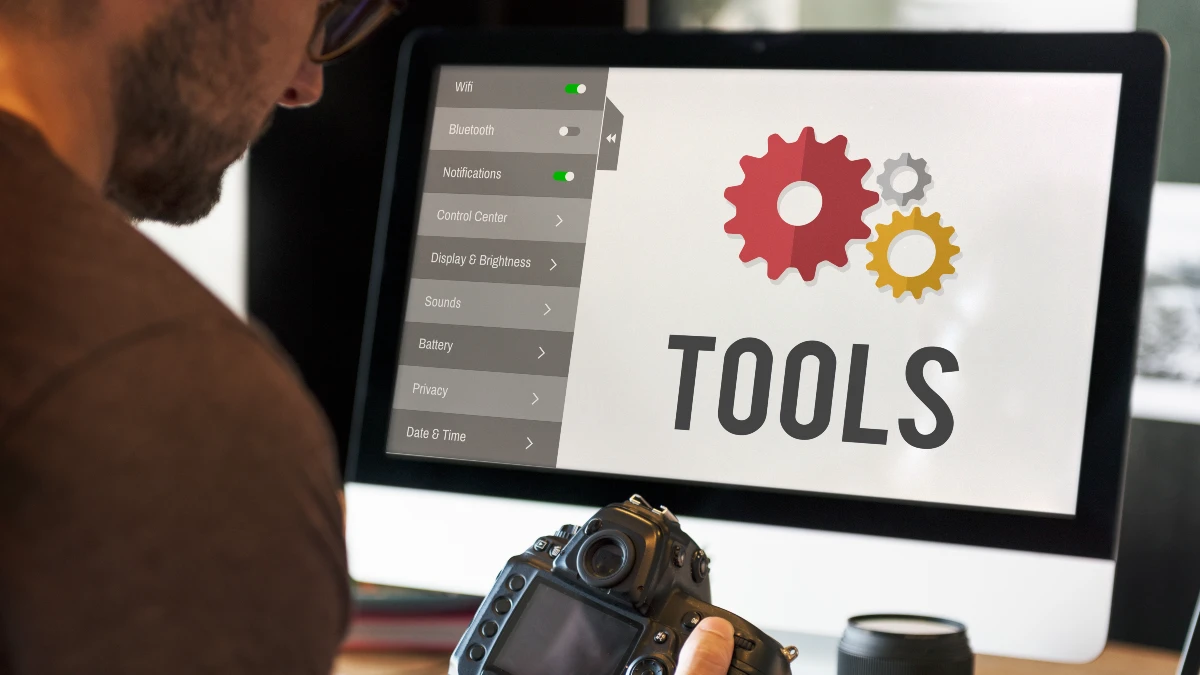10 Automated Business Ideas $10K Month Recurring Income!

Most people trade time for money. Work stops, income stops. But recurring revenue changes everything. Your customers pay monthly while you sleep, travel, or build your next project. Here are 11 proven automated business models generating $10,000+ every month.
Real numbers. Real tools. Real steps to start. Pick one model, commit 90 days, and build income that compounds while traditional businesses start from zero each month. Membership-based businesses now grow five times faster than traditional companies.
The online education market will hit $341.72 billion by 2025. Subscription boxes reached $41.47 billion in revenue. The opportunity is real, and the timing is right.
1. Build a Micro-SaaS Tool: The $10K-$50K Monthly Model

Software as a Service gives you access to tools through subscriptions instead of one-time purchases. You pay monthly, you get updates and support automatically.
This model offers recurring revenue and decreased piracy. People can’t steal your software when it lives in the cloud and requires authentication.
The Revenue Potential
SaaS companies with median annual contract values of $62,000 can scale to significant monthly recurring revenue. But you don’t need enterprise clients to hit $10K monthly.
Here’s a better path: Build a micro-SaaS tool for a specific niche. Charge $99 per month. Get 101 customers. You’re at $10K monthly.
Getting Started
Step 1: Find a specific problem in your niche. Talk to people. What frustrates them? What tasks do they repeat every day?
Step 2: Build an MVP (minimum viable product). Don’t make it perfect. Make it functional. Get feedback. Improve.
Step 3: Automate onboarding and billing. New users should be able to sign up, pay, and start using your tool without talking to you.
Tools You Need
- Stripe: For payment processing
- AWS or DigitalOcean: For hosting
- Intercom: For customer support
- Analytics dashboard: To track user behavior
Create a tool that solves a simple problem where users sign up, pay monthly, and use it without human help from your side.
Real Examples
Project management tools for specific industries: A construction project manager needs different features than a marketing agency. Build for one specific group.
Automated reporting dashboards: Pull data from multiple sources, create reports automatically. Save people 10 hours per week.
Scheduling and booking systems: For dentists, salons, or consultants. Make appointment booking automatic.
CRM tools for niche markets: Real estate agents need different CRM features than insurance brokers. Pick one niche and dominate it.
The Reality Check
Building SaaS takes time. Expect 3-6 months to build your MVP. Expect another 6-12 months to get to $10K monthly. It’s not fast, but it’s sustainable.
You need technical skills or money to hire developers. Budget $5,000-$20,000 for initial development if you’re outsourcing.
2. Launch a Premium Membership Site: Predictable $10K-$30K Monthly

Membership sites give people access to exclusive content, tools, and resources. They pay monthly, quarterly, or annually. You deliver value continuously.
The Business Model
One creator runs a membership site at $44/month. She has over 100 students accessing templates, tutorials, and community. That’s over $4,000 in monthly revenue from just 100 people.
Scale that up. Get 227 members at $44/month, and you’re at $10K monthly.
Or go premium. Charge $197/month for high-touch, transformation-focused programs. You only need 51 members to hit $10K.
Pricing That Works
Lower-priced memberships ($27-$67/month) need more members but convert easier. Higher-priced memberships ($197-$497/month) need fewer members but require more value delivery.
The sweet spot for most people: $97-$147/month. This range feels premium but accessible. You need 69-103 members to hit $10K.
Platform Options
Kajabi: All-in-one solution. Expensive ($119-$319/month) but handles everything.
Memberpress with WordPress: More affordable. More control. Requires technical knowledge.
Circle.so: Built for community-focused models. Clean interface. Easy member engagement.
Content Delivery Strategy
Use tiered membership models to serve more people at different price points without extra marketing. Here’s how:
Free Tier: Basic access to 3-5 pieces of content. Gets people in the door.
Premium Tier ($47-$97/month): Full content library, monthly Q&A calls, community access.
VIP Tier ($197-$497/month): Everything in Premium plus 1-on-1 coaching, early access to new content, exclusive workshops.
Each tier serves a different customer. Some people can’t afford $497/month but will happily pay $47. You capture both.
What You Need to Succeed
Membership-based businesses are growing five times faster than traditional companies. The global e-learning market is expected to surpass $848+ billion by 2030. And 70% of businesses see memberships and subscription models as key to future business growth.
But here’s the truth: You need to deliver consistent value. New content every month. Active community engagement. Quick responses to questions.
If you disappear for three months, your members disappear too.
Quick Start Plan
- Choose your niche (specific problem for specific people)
- Create 10-15 pieces of core content
- Set up your platform
- Launch to your existing audience (email list, social media)
- Add new content monthly
- Engage with members weekly
Expect 6-12 months to reach $10K monthly if you’re starting from scratch. Faster if you already have an audience.
3. Create & Automate Online Courses: $8K-$40K Monthly Potential

The online education market is projected to reach $341.72 billion by 2025, with annual growth of around 15.75% through 2029. People want to learn. You can teach them.
What Creators Actually Earn
Kajabi reports that on average, its creators earn $37,000 per year. That’s about $3,083 per month. Not quite $10K yet.
But here’s the good part: Kajabi creators have collectively earned more than $8 billion since inception. Some creators make way more than average.
Take Productize Yourself. This course costs $149. It was earning over $48,000 per month in revenue at the back end of 2023. That’s 322 sales per month.
And 70% of creators said online courses made them the most revenue over the last 12 months.
Course Topics That Sell
Digital marketing and project management were the most searched courses globally. Over 177,000 and 72,000 average monthly searches respectively.
Other hot topics:
- Coding and web development
- Business and entrepreneurship
- Personal finance and investing
- Health and fitness
- Creative skills (photography, design, writing)
Pick something you know deeply. Pick something people will pay to learn.
The Automation Setup
Host courses on your own website or on platforms like Thinkific. Set up these automations:
- Auto-send welcome emails when someone enrolls
- Add users to Facebook groups automatically
- Drip content so lessons release on schedule
- Send reminder emails for incomplete lessons
- Use quizzes to guide students to the right content
Once it’s set up, new students can enroll and complete your course without you lifting a finger.
Platform Comparison
Kajabi ($89-$399/month): All-in-one. Marketing tools included. Email automation built-in. Best for serious creators.
Teachable: Lower cost. Good for beginners. Takes a percentage of sales on cheaper plans.
Thinkific: Middle ground. Clean interface. Fair pricing.
Podia: Simple and affordable. Great for people who want to start fast.
The Math to $10K
Price your course at $497. Sell 20 per month. That’s $9,940.
Or price at $197. Sell 51 per month. That’s $10,047.
Or create multiple courses. Three courses at $297 each. Sell 12 of each per month. That’s $10,692.
The key is building an email list and having a consistent traffic source. Without traffic, no one buys.
Reality Check
Creating a quality course takes 40-80 hours. Marketing it takes constant effort. Most course creators fail because they build a great course but can’t get anyone to buy it.
You need:
- Traffic (SEO, ads, social media)
- Email list (to nurture leads)
- Sales funnel (to convert browsers into buyers)
- Testimonials (social proof matters)
Plan for 6-18 months to hit $10K monthly from courses alone.
4. Automated Subscription Box: $10K-$25K Monthly Model

Subscription boxes are booming. The market reached $41.47 billion in 2025 with strong recurring revenue and passive income potential.
People love getting curated products delivered to their door every month. You love getting paid every month. It’s a perfect match.
How It Works
You curate products around a theme. Beauty products. Fitness gear. Snacks from different countries. Books. Craft supplies. Pet toys.
Customers subscribe. You charge their card monthly. You pack and ship boxes. They get excited opening them.
The Automation Process
Partner with fulfillment centers. They handle storage, packing, and shipping. You just manage the product selection and marketing.
Use platforms like Cratejoy. They automate:
- Subscription billing
- Inventory management
- Shipping notifications
- Customer management
Or use Amazon FBA to handle packaging and fulfillment automatically.
Niche Selection
Pick something specific. “Beauty products” is too broad. “Korean skincare for dry skin” is better. “Sustainable beauty products for sensitive skin” is even better.
Popular niches:
- Beauty and skincare
- Fitness and wellness
- Pet products (especially dogs and cats)
- Gourmet foods and snacks
- Books (specific genres)
- Hobby supplies (crafts, art, etc.)
Pricing Structure
Most successful boxes charge $30-$60 per month. Your cost of goods should be under 50% of that price. So if you charge $50, your products and shipping should cost under $25.
Offer discounts for longer commitments:
- Monthly: $50
- 3 months: $45/month ($135 total)
- 6 months: $42/month ($252 total)
- 12 months: $40/month ($480 total)
People who commit to longer terms are less likely to cancel.
The Math to $10K
Charge $50 per box. Get 200 subscribers. That’s $10,000 monthly.
Your costs per box: $20 for products, $5 for shipping, $2 for packaging. Total: $27 per box.
Revenue: $10,000 Costs: $5,400 Gross profit: $4,600
Add in platform fees, marketing, and overhead. Your net might be $3,000-$3,500. Still solid for a semi-automated business.
Real Examples
Dollar Shave Club started as a subscription box for razors. They sold to Unilever for $1 billion. You probably won’t sell for $1 billion, but the model works.
Niche-specific boxes work even better now:
- Craft supplies delivered monthly
- International snacks from a different country each month
- Wellness products for specific health goals
The Challenge
Subscription boxes have higher churn than digital products. People cancel when money gets tight or they get bored.
Keep churn low by:
- Surprising customers with bonus items
- Letting them customize their boxes
- Building community around your brand
- Offering exclusive products they can’t get elsewhere
Expect 5-10% monthly churn. That means if you have 200 subscribers, 10-20 will cancel each month. You need to add more than that just to maintain.
5. Scale Coaching with Automation: $12K-$50K Monthly

Coaching usually means trading time for money. One hour with a client equals one paycheck. Stop coaching, stop earning.
But you can automate most of it.
The Hybrid Model
Combine pre-recorded content with live group sessions. Scale your time while still delivering personal attention.
Here’s how it works:
- Record core training modules
- Students watch on their own time
- Host live group Q&A calls (1-2 per month)
- Create a community for peer support
- Offer templates and resources for self-implementation
You deliver the same value but serve 50 people instead of 5.
Revenue Structure
Provide industry guidance via recorded modules, group sessions, or digital resource bundles for recurring passive income.
Entry-level group programs ($197-$497/month):
- Core training modules
- Monthly group call
- Community access
- Basic resources
You need 21-51 members to hit $10K.
Mid-tier with more access ($997-$1,997/month):
- Everything in entry-level
- Bi-weekly group calls
- Hot seat coaching
- Advanced resources
- Email support
You need 6-11 members to hit $10K.
Automation Tools You Need
Course platforms: Teachable, Thinkific, or Kajabi for content delivery
Calendly: For automatic booking of group calls
Zoom: For live sessions (records automatically for replay)
Email automation: ConvertKit or ActiveCampaign for onboarding sequences
Community platform: Circle, Mighty Networks, or Facebook Group
Scaling Strategy
Focus on a specific niche. Don’t be a “life coach” or “business coach.” Be a coach for:
- Real estate agents who want to scale to $1M in commissions
- Freelance designers who want to land corporate clients
- E-commerce store owners growing from $10K to $100K monthly
Create evergreen lead funnels. Run webinars that auto-replay. Use pre-recorded content for 80% of value delivery. Add live Q&A as the premium bonus.
The Math
Charge $497/month. Get 21 clients. That’s $10,437.
Your time commitment:
- 2 hours for group calls per month
- 2 hours for email support per week
- 1 hour for content updates per month
Total: about 11 hours per month for $10K. That’s $948 per hour.
Compare that to 1-on-1 coaching at $200/hour. You’d need 50 hours per month (12.5 hours per week) to make the same amount.
Reality Check
Building a coaching program takes credibility. You need proof you can deliver results. Start by coaching people 1-on-1. Get testimonials. Then scale to groups.
You’ll spend 3-6 months creating content. Another 6-12 months building your audience and getting initial members. But once it’s running, it’s highly profitable with low time investment.
6. Print-on-Demand Store: Low-Risk $8K-$20K Monthly

With print on demand, you earn passive income every time a customer orders. Services like Printful and Printify handle everything from printing to shipping.
You never touch inventory. You never pack boxes. You just upload designs and market your store.
How It Works
- Create designs using Canva, Adobe, or hire designers
- Upload to a print-on-demand platform
- They list on your store (Shopify, Etsy, etc.)
- Customer orders
- Platform prints and ships automatically
- You get paid the difference
Platform Options
Printful: Best for white labeling. You can remove their branding. Premium pricing but higher quality.
Printify: More suppliers. Faster shipping options. Lower base costs. Some quality variance between suppliers.
Both integrate with Shopify, Etsy, WooCommerce, and other platforms.
Design Strategy
Target specific niches. Don’t try to sell to everyone. Pick one group and dominate.
Examples:
- Dog breed-specific designs (Labrador owners, Bulldog parents, etc.)
- Profession-based (nurses, teachers, construction workers)
- Hobby-focused (gardening, fishing, hiking)
- Sarcastic quotes for specific audiences
Use design tools like Canva. You don’t need to be a professional designer. Many top POD stores use simple text-based designs.
Marketing Automation
Use AI-powered tools for social media content and targeted advertising to attract customers.
Set up:
- Facebook/Instagram ads with dynamic product ads
- Pinterest automation (pins get traffic for years)
- Google Shopping ads
- Email marketing for repeat customers
Scaling Approach
Start with 10-20 designs. Upload them. Test market response.
Track which designs sell. Create variations:
- Different colors
- Different products (t-shirts, hoodies, mugs, phone cases)
- Similar themes
Expand winning designs. Cut losing designs. Keep testing.
The Math to $10K
Average profit per sale: $10-$15 (after production costs and platform fees)
To make $10K monthly:
- Sell 667-1,000 items per month
- That’s 22-33 items per day
Or increase your average order value:
- Bundle products (buy a t-shirt, add a matching mug)
- Offer premium products (hoodies instead of t-shirts)
- Create collections people buy together
Reality Check
POD is competitive. Everyone can do it, so everyone does.
Your success depends on:
- Design quality (or hiring good designers)
- Marketing budget (organic reach is nearly dead)
- Niche selection (specific beats generic)
- Customer service (handle issues fast)
Expect to spend $500-$2,000 monthly on ads when starting. More as you scale.
Plan for 6-12 months to reach $10K monthly. Some people hit it in 3 months. Some never hit it. Marketing skills make the difference.
7. Build Automated Affiliate Income: $10K-$100K Monthly

Promote other companies’ products. Earn commissions on sales. Do it through automated content that works 24/7.
The Revenue Model
You don’t create products. You don’t handle customer service. You don’t deal with refunds.
You just send people to products they want. Companies pay you a percentage when someone buys.
Commission rates vary:
- Amazon: 1-10% depending on category
- Software/SaaS: 20-50% recurring
- Digital products: 30-75%
- High-ticket coaching: $500-$5,000 per sale
Content Automation
Set up pre-written email sequences that nurture leads, promote products, and generate sales running 24/7 once built.
Here’s the system:
Step 1: Create content that attracts people searching for solutions
- Blog posts optimized for SEO
- YouTube videos answering common questions
- Pinterest pins linking to reviews
Step 2: Capture emails with lead magnets
- Free guides
- Checklists
- Templates
- Mini-courses
Step 3: Automate email sequences
- Educational content (builds trust)
- Product recommendations (affiliate links)
- Case studies (social proof)
- Limited offers (creates urgency)
Niche Selection
Choose products with good commission rates and strong demand.
Profitable niches:
- Web hosting and website builders (high recurring commissions)
- Email marketing tools (20-30% recurring for life)
- Course platforms (30-40% recurring)
- Project management software (20-40% recurring)
- Financial products (high one-time commissions)
Traffic Strategies
SEO-optimized content: Write detailed product reviews and comparisons. Target keywords like “best [product] for [use case].”
Pinterest automation: Use Tailwind to schedule pins. One good pin can drive traffic for years.
YouTube evergreen videos: Create reviews and tutorials. Videos keep getting views and clicks years later.
Scaling System
Build an email list. This is your asset. When you promote a new product, email your list.
Create automated webinar funnels. Record a webinar once. Let it replay automatically. Include affiliate products in the presentation.
Use retargeting ads. People who visit your content but don’t buy see ads following them around the internet. Many buy later.
The Math to $10K
Promote a $997 course with 40% commission. That’s $399 per sale. You need 26 sales per month.
Or promote $97/month software with 30% recurring commission. That’s $29.10 per customer per month. You need 344 active customers.
The beauty of recurring commissions: They stack. Month 1 you have 20 customers ($582). Month 2 you add 20 more, now you have 40 ($1,164). Keep adding, and the numbers compound.
Reality Check
Affiliate marketing takes time to build. You need traffic. Traffic comes from SEO (6-12 months) or paid ads (immediate but expensive).
Most people quit before seeing results. They write 10 blog posts and expect $10K monthly. It doesn’t work like that.
You need:
- 100+ pieces of content for SEO traffic
- Or $2,000-$5,000 monthly ad budget
- Or 10,000+ email subscribers
- Or combination of all three
Plan for 12-24 months to reach $10K monthly with organic traffic. Faster with paid ads but requires constant budget.
8. Develop Subscription-Based Apps: $15K-$60K Monthly

The online course app sector earned $3.1 billion revenue in 2023, a 14.8% increase over the prior year. Mobile apps with subscriptions generate serious money.
What Works
Apps generate recurring revenue with minimal upkeep through in-app purchases and ads, creating multiple income streams.
Successful categories:
- Productivity tools: Task managers, note-taking, time tracking
- Fitness tracking: Workout plans, meal tracking, progress photos
- Meditation: Guided sessions, sleep sounds, breathing exercises
- Language learning: Daily lessons, vocabulary building
- Financial management: Budgeting, expense tracking, investment tracking
Development Approach
You have two options:
Option 1: No-code tools
- Bubble, Adalo, or FlutterFlow
- Build it yourself with tutorials
- Costs: $100-$500 monthly for tools
- Time: 2-6 months to launch
Option 2: Hire developers
- Find freelancers on Upwork or agencies
- Costs: $10,000-$50,000 for MVP
- Time: 3-6 months to launch
- Quality: Usually better but expensive
Focus on solving specific problems. Don’t build another to-do app. Build a to-do app specifically for freelancers tracking client projects. Or for parents managing family schedules.
Monetization
Use a freemium model with premium subscriptions at $4.99-$19.99/month.
Free tier: Basic functionality. Gets people hooked.
Premium tier ($4.99-$9.99/month): Removes limits. Adds useful features. Most users convert here.
Pro tier ($14.99-$19.99/month): Advanced features. Power users only.
The Math to $10K
Charge $9.99/month. Get 1,001 subscribers. That’s $10,000 monthly.
But expect these conversion rates:
- 100,000 downloads
- 10,000 active users (10% activation rate)
- 500 premium subscribers (5% conversion rate)
- $4,995 monthly at $9.99 each
To hit $10K, you need either:
- Double your subscribers (1,000 at $9.99)
- Or double your downloads and maintain ratios
- Or increase conversion rates through better onboarding
Reality Check
Building an app is the easy part. Getting downloads is hard.
You need a marketing strategy:
- App Store Optimization (ASO)
- Social media presence
- Content marketing
- Paid ads
- Press coverage
- Influencer partnerships
Apple and Google take 30% of subscription revenue the first year, 15% after. Factor that into your pricing.
Budget $20,000-$50,000 for development and initial marketing. Plan for 12-24 months to reach $10K monthly.
9. Automate Content Royalties: $8K-$30K Monthly

Create content once. Sell it forever. Earn money every time someone downloads your work.
Content Types That Sell
Stock photography: Businesses need images for websites, ads, social media. Upload photos. Get paid per download.
Video footage: B-roll, stock clips, motion backgrounds. Video demand is exploding.
Music tracks: Background music for videos, podcasts, commercials. Create once, sell hundreds of licenses.
Design templates: Canva templates, PowerPoint themes, social media graphics.
3D models: For game developers, animators, product designers.
Platforms
Shutterstock: Popular for photos and videos. Lower commission (15-40%) but high traffic.
Adobe Stock: Better commission (33-35%). Integrated with Creative Cloud users.
AudioJungle: For music and sound effects. 50% commission on sales.
Creative Market: For design templates and graphics. 70% commission.
Etsy: For Canva templates and printables. You set the price.
Volume Strategy
Upload 500-1,000+ assets to generate consistent monthly royalties.
Here’s why volume matters:
With 100 photos earning $0.25 per download:
- 10 downloads per photo per month = 1,000 downloads
- $250 monthly income
With 1,000 photos earning $0.25 per download:
- 10 downloads per photo per month = 10,000 downloads
- $2,500 monthly income
More content equals more discovery equals more sales.
Passive Nature
Once uploaded, content generates income indefinitely without additional work.
A photo you upload today might sell for the next 10 years. Your income builds as you add more content.
Optimization
Use keyword research to find what people search for. Follow trending topics. Create series of related content.
For photos:
- “Remote work” is more popular than “office work”
- “Diverse team” gets more searches than “business team”
- “Authentic lifestyle” beats “posed corporate”
For design templates:
- Instagram story templates for specific industries
- Social media templates for holidays
- Business templates for specific professions
The Math to $10K
This requires serious volume.
Stock photos average $0.25-$2.00 per download depending on license. Let’s say $0.50 average.
To make $10,000 monthly:
- 20,000 downloads at $0.50 each
- If each asset gets 10 downloads monthly, you need 2,000 assets
Or focus on higher-value items:
- Design templates at $10-$30 each
- 334-1,000 sales monthly
- If each template gets 5 sales monthly, you need 67-200 templates
Reality Check
Building a royalty income stream takes years, not months.
Professional photographers upload 10,000+ photos. Designers create hundreds of templates. Musicians produce thousands of tracks.
This is a volume game. Start small. Upload 10 items per week. In one year, you’ll have 520 assets. In two years, 1,040 assets.
The good news: It’s truly passive once uploaded. Bad news: It takes time to build meaningful income.
10. Dropshipping with Automation: $10K-$35K Monthly

Sell products without holding inventory. Suppliers ship directly to customers. You handle marketing and customer service.
The Business Model
Customer orders from your online store. Order automatically goes to supplier. Supplier ships to customer. You keep the profit.
No warehouse. No inventory. No packing boxes.
Automation Tools
Marketing automation handles email campaigns, cart abandonment, and customer follow-ups automatically.
Set up:
- Automatic order processing: Orders go straight to suppliers
- Tracking updates: Customers get shipping notifications automatically
- Email sequences: Cart abandonment, post-purchase follow-ups, review requests
- Customer service: Chatbots handle common questions
Product Selection
Choose products with steady demand that aren’t too common.
Winners right now:
- Beauty products (skincare, makeup tools)
- Fitness gear (resistance bands, yoga accessories)
- Pet supplies (toys, grooming tools, accessories)
- Home office products (desk organizers, lighting)
- Phone accessories (cases, chargers, stands)
Avoid electronics and anything that breaks easily. Customer service nightmares aren’t worth it.
Platform Setup
Shopify is the standard. Add Oberlo or DSers for automated product importing and order fulfillment.
Shopify costs $39-$399/month. Apps add another $30-$100/month. Budget $100-$200 monthly for platform costs.
Scaling Strategy
Test multiple products. Most will fail. Some will be winners.
For each product:
- Create store listing with good photos
- Run Facebook/Instagram ads for 7 days ($50-$100 budget)
- Track conversion rate and profit per sale
- If profitable, scale up ad spend
- If not profitable, try next product
Once you find winners:
- Order samples to verify quality
- Build Facebook/Instagram pages around that niche
- Create email sequences for repeat purchases
- Expand to similar products
The Math to $10K
Average order: $50 Product cost: $25 Shipping: $5 Total cost: $30 Profit per order: $20
To make $10,000 monthly profit:
- 500 orders per month
- That’s 17 orders per day
If your conversion rate is 2% and ad cost per click is $0.50:
- 25,000 visitors needed monthly
- 50,000 ad clicks at $0.50 = $25,000 in ad spend
Wait, that math doesn’t work. You’d spend $25K to make $10K.
Better approach: Build organic traffic through SEO and social media. Use ads just to boost winners. Or increase profit margins by finding better suppliers.
Reality Check
Dropshipping got easier to start, which means more competition. Your success depends entirely on:
- Finding good suppliers (quality matters)
- Marketing skills (can you drive cheap traffic?)
- Customer service (happy customers = fewer refunds)
- Product selection (trendy items have short lifespans)
Expect to test 20-50 products before finding consistent winners. Budget $2,000-$5,000 for initial testing.
Plan for 6-12 months to reach $10K monthly. Some hit it faster. Most don’t hit it at all.
